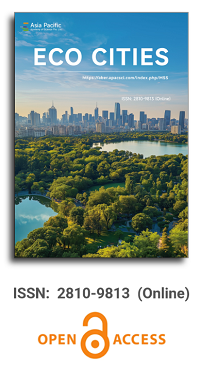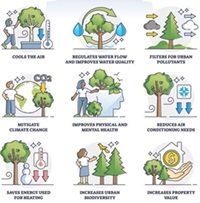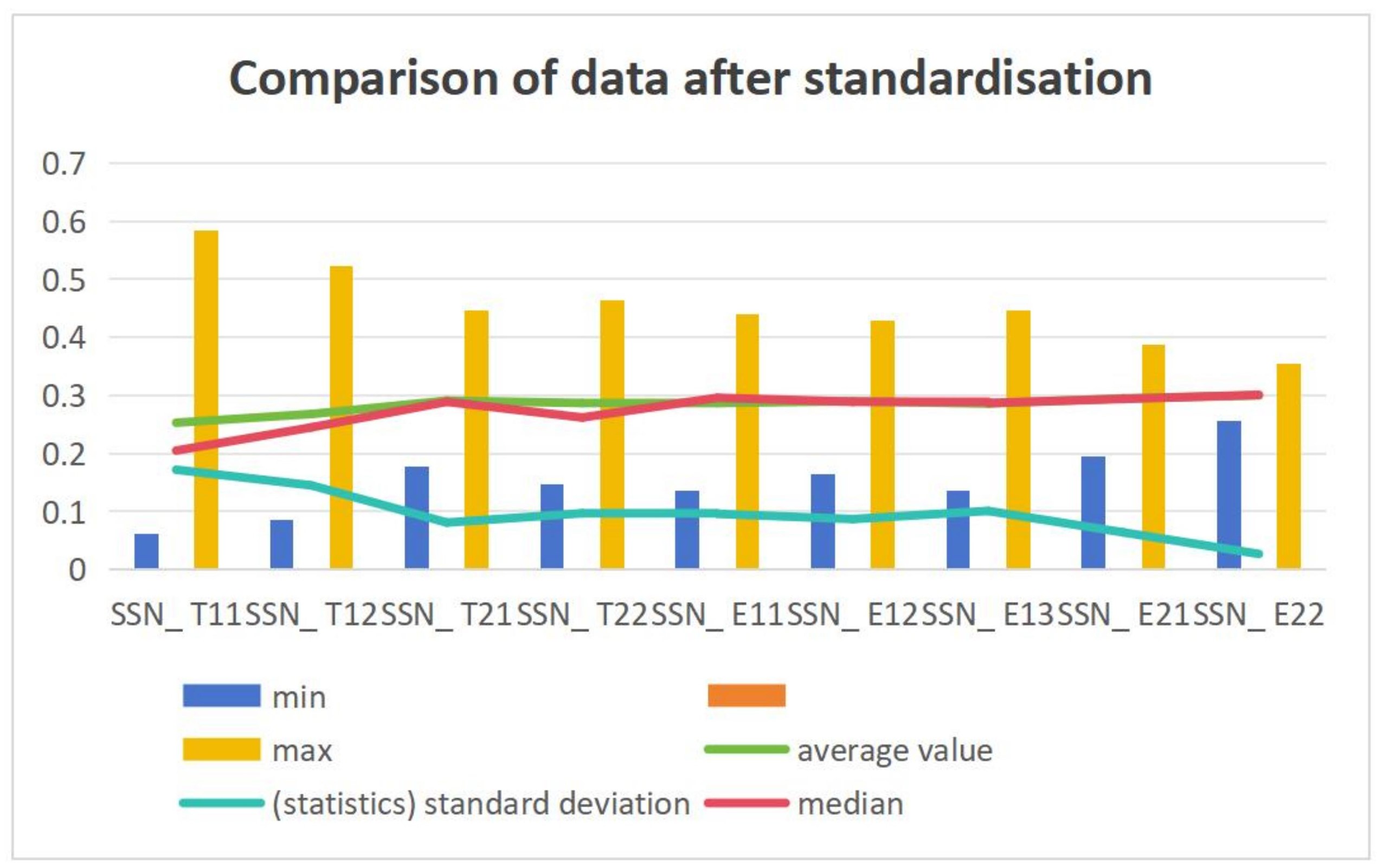


Global insights, local realities: BGI challenges and opportunities in Indian urbanization
Vol 4, Issue 2, 2023
Download PDF
Abstract
This study provides a global perspective on the status of Blue-Green Infrastructure (BGI) and investigates the challenges and opportunities associated with its implementation in the urban landscape of India. The research delves into the multifaceted realm of BGI by first elucidating its current status worldwide. It explores how cities globally, amidst expanding urbanization and escalating environmental challenges, have recognized the importance of BGI as a pivotal strategy. The paper then narrows its focus to the specific challenges and opportunities confronting Indian cities in the adoption and integration of BGI. By conducting a comprehensive analysis of existing literature, global policy frameworks, and pertinent case studies, the study aims to unravel the complex interplay that governs BGI implementation in the Indian urban context. This dual approach ensures a nuanced understanding of both the global context and the specific challenges and opportunities faced by urban India in the realm of Blue-Green Infrastructure.
Keywords
References
- Kundu A. Trends and processes of urbanisation in India. Available online: http://pubs.iied.org/10597IIED.html.A (accessed on 23 February 2023).
- Wakode HB, Baier K, Jha R, et al. Impact of urbanization on groundwater recharge and urban water balance for the city of Hyderabad, India. International Soil and Water Conservation Research 2018; 6(1): 51–62. doi: 10.1016/j.iswcr.2017.10.003
- Li C, Liu M, Hu Y, et al. Modeling the quality and quantity of runoff in a highly urbanized catchment using storm water management model. Polish Journal of Environmental Studies 2016; 25(4): 1573–1581. doi: 10.15244/pjoes/60721
- Du S, Van Rompaey A, Shi P, et al. A dual effect of urban expansion on flood risk in the Pearl River Delta (China) revealed by land-use scenarios and direct runoff simulation. Natural Hazards 2015; 77(1): 111–128. doi: 10.1007/s11069-014-1583-8
- IPCC. Climate change widespread, rapid, and intensifying. Available online: https://www.ipcc.ch/2021/08/09/ar6-wg1-20210809-pr/ (accessed on 24 February 2023).
- Mujumdar M, Bhaskar P, Ramarao MVS, et al. Droughts and floods. In: Krishnan R, Sanjay J, Gnanaseelan C, et al. (editors). Assessment of Climate Change over the Indian Region. Springer; 2020. pp. 117–141. doi: 10.1007/978-981-15-4327-2_6
- Wang H, Cheng X, Man L, et al. Challenges and future improvements to China’s sponge city construction. In: Proceedings of the International Low Impact Development Conference China 2016; 26–29 July 2016; Beijing, China. doi: 10.1061/9780784481042.036
- Li H, Ding L, Ren M, et al. Sponge city construction in China: A survey of the challenges and opportunities. Water 2017; 9(9): 594. doi: 10.3390/w9090594
- Gledhill DG, James P. Rethinking urban blue spaces from a landscape perspective: Species, scale and the human element. Available online: https://www.researchgate.net/publication/228902434 (accessed on 21 February 2023).
- Lamond J, Everett G. Sustainable Blue-Green Infrastructure: A social practice approach to understanding community preferences and stewardship. Landscape and Urban Planning 2019; 191: 103639. doi: 10.1016/j.landurbplan.2019.103639
- Ghofrani Z, Sposito V, Faggian R. A comprehensive review of Blue-Green Infrastructure concepts. International Journal of Environment and Sustainability 2017; 6(1). doi: 10.24102/ijes.v6i1.728
- Jiang Y, Zevenbergen C, Ma Y. Urban pluvial flooding and stormwater management: A contemporary review of China’s challenges and “sponge cities” strategy. Environmental Science & Policy 2018; 80: 132–143. doi: 10.1016/j.envsci.2017.11.016
- Babí Almenar J, Elliot T, Rugani B, et al. Nexus between nature-based solutions, ecosystem services and urban challenges. Land Use Policy 2021; 100: 104898. doi: 10.1016/j.landusepol.2020.104898
- Kaur R, Gupta K. Blue-Green Infrastructure (BGI) network in urban areas for sustainable storm water management: A geospatial approach. City and Environment Interactions 2022; 16: 100087. doi: 10.1016/j.cacint.2022.100087
- Zhao H, Gu B, Fan J, et al. Socioeconomic factors influence the spatial and temporal distribution of blue–Green Infrastructure demand: A case of Nanjing City. International Journal of Environmental Research and Public Health 2023; 20(5): 3979. doi: 10.3390/ijerph20053979
- Toxopeus H, Polzin F. Reviewing financing barriers and strategies for urban nature-based solutions. Journal of Environmental Management 2021; 289: 112371. doi: 10.1016/j.jenvman.2021.112371
- Monteiro R, Ferreira J, Antunes P. Green infrastructure planning principles: An integrated literature review. Land 2020; 9(12): 525. doi: 10.3390/land9120525
- Kimic K, Ostrysz K. Assessment of blue and green infrastructure solutions in shaping urban public spaces—Spatial and functional, environmental, and social aspects. Sustainability 2021; 13(19): 11041. doi: 10.3390/su131911041
- Garcia-Cuerva L, Berglund EZ, Rivers L. An integrated approach to place Green Infrastructure strategies in marginalized communities and evaluate stormwater mitigation. Journal of Hydrology 2018, 559: 648–660. doi: 10.1016/j.jhydrol.2018.02.066
- Rahman A. Rainwater harvesting for sustainable developments: Non-potable use, household irrigation and stormwater management. Water 2021; 13(23): 3460. doi: 10.3390/w13233460
- Liao KH, Deng S, Tan PY. Blue-green infrastructure: New frontier for sustainable urban stormwater management. In: Tan P, Jim C (editors). Greening Cities: Forms and Functions. Springer; 2017. pp. 203–226. doi: 10.1007/978-981-10-4113-6_10
- Pochodyła E, Glińska-Lewczuk K, Jaszczak A. Blue-green infrastructure as a new trend and an effective tool for water management in urban areas. Landscape Online 2021; 92: 1–20. doi: 10.3097/lo.202192
- Bąk J, Barjenbruch M. Benefits, Inconveniences, and facilities of the application of rain gardens in urban spaces from the perspective of climate change—A review. Water 2022; 14(7): 1153. doi: 10.3390/w14071153
- Jusić S, Hadžić E, Milišić H. Urban stormwater management—New technologies. In: Karabegović, I. (editors). New Technologies, Development and Application II, Proceedings of the 5th International Conference “New Technologies, Development and Applications”; 27–29 June; Sarajevo, Bosnia and Herzegovina. Springer; 2019. Volume 76. pp. 790–797. doi: 10.1007/978-3-030-18072-0_90
- Ekka SA, Rujner H, Leonhardt G, et al. Next generation swale design for stormwater runoff treatment: A comprehensive approach. Journal of Environmental Management 2021; 279: 111756. doi: 10.1016/j.jenvman.2020.111756
- Randall M, Sun F, Zhang Y, et al. Evaluating sponge city volume capture ratio at the catchment scale using SWMM. Journal of Environmental Management 2019; 246: 745–757. doi: 10.1016/j.jenvman.2019.05.134
- Vijayaraghavan K. Green roofs: A critical review on the role of components, benefits, limitations and trends. Renewable and Sustainable Energy Reviews 2016; 57: 740–752. doi: 10.1016/j.rser.2015.12.119
- Almeida AP, Liberalesso T, Silva CM, et al. Combining green roofs and rainwater harvesting systems in university buildings under different climate conditions. Science of The Total Environment 2023; 887: 163719. doi: 10.1016/j.scitotenv.2023.163719
- Kew B, Pennypacker E, Echols S. Can greenwalls contribute to stormwater management? A study of cistern storage greenwall first flush capture. Journal of Green Building 2014; 9(3): 85–99. doi: 10.3992/1943-4618-9.3.85
- Başdoğan G, Çiğ A. Ecological-social-economical impacts of vertical gardens in the sustainable city model. Yuzuncu Yıl University Journal of Agricultural Sciences 2016; 26(3): 430–438.
- Abel C. The vertical garden city: towards a new urban topology. Available online: www.chrisabel.com (accessed on 7 May 2023).
- Hamel P, Tan L. Blue-green infrastructure for flood and water quality management in southeast Asia: Evidence and knowledge gaps. Environmental Management 2021; 69(4): 699–718. doi: 10.1007/s00267-021-01467-w
- Battemarco BP, Tardin-Coelho R, Veról AP, et al. Water dynamics and Blue-Green Infrastructure (BGI): Towards risk management and strategic spatial planning guidelines. Journal of Cleaner Production 2022; 333: 129993. doi: 10.1016/j.jclepro.2021.129993
- Ristic R, Radic B, Miljanovic V, et al. “Blue-green” corridors as a tool for mitigation of natural hazards and restoration of urbanized areas: A case study of Belgrade city. Spatium 2013; 30: 18–22. doi: 10.2298/spat1330018r
- Aziz HA, Rasidi MH. The role of green corridors for wildlife conservation in urban landscape: A literature review. IOP Conference Series: Earth and Environmental Science 2014; 18: 012093. doi: 10.1088/1755-1315/18/1/012093
- Blaha DW, May C, Horner R, et al. The effectiveness of stormwater management and riparian buffers in mitigating the effects of urbanization on streams. Proceedings of the Water Environment Federation 2002; 2002(2): 1650–1663. doi: 10.2175/193864702785665922
- Bettez ND, Groffman PM. Denitrification potential in stormwater control structures and natural riparian zones in an urban landscape. Environmental Science & Technology 2012; 46(20): 10909–10917. doi: 10.1021/es301409z
- Scholz M, Grabowiecki P. Review of permeable pavement systems. Building and Environment 2007; 42(11): 3830–3836. doi: 10.1016/j.buildenv.2006.11.016
- Ahiablame LM, Engel BA, Chaubey I. Effectiveness of low impact development practices in two urbanized watersheds: Retrofitting with rain barrel/cistern and porous pavement. Journal of Environmental Management 2013; 119: 151–161. doi: 10.1016/j.jenvman.2013.01.019
- Im J. Green streets to serve urban sustainability: Benefits and typology. Sustainability 2019; 11(22): 6483. doi: 10.3390/su11226483
- Church SP. Exploring green streets and rain gardens as instances of small scale nature and environmental learning tools. Landscape and Urban Planning 2015; 134: 229–240. doi: 10.1016/j.landurbplan.2014.10.021
- Gunn C, Vahdati M, Shahrestani M. Green walls in schools—The potential well-being benefits. Building and Environment 2022; 224: 109560. doi: 10.1016/j.buildenv.2022.109560
- Manso M, Teotónio I, Silva CM, et al. Green roof and green wall benefits and costs: A review of the quantitative evidence. Renewable and Sustainable Energy Reviews 2021; 135: 110111. doi: 10.1016/j.rser.2020.110111
- Manso M, Castro-Gomes J. Green wall systems: A review of their characteristics. Renewable and Sustainable Energy Reviews 2015; 41: 863–871. doi: 10.1016/j.rser.2014.07.203
- Islam A, Hassini S, El-Dakhakhni W. A systematic bibliometric review of optimization and resilience within low impact development stormwater management practices. Journal of Hydrology 2021; 599: 126457. doi: 10.1016/j.jhydrol.2021.126457
- Ahiablame LM, Engel BA, Chaubey I. Effectiveness of low impact development practices: Literature review and suggestions for future research. Water, Air, & Soil Pollution 2012; 223(7): 4253–4273. doi: 10.1007/s11270-012-1189-2
- Eckart K, McPhee Z, Bolisetti T. Performance and implementation of low impact development—A review. Science of The Total Environment 2017; 607–608: 413-432. doi: 10.1016/j.scitotenv.2017.06.254
- Sun Y, Deng L, Pan SY, et al. Integration of green and gray infrastructures for sponge city: Water and energy nexus. Water-Energy Nexus 2020; 3: 29–40. doi: 10.1016/j.wen.2020.03.003
- Li X, Li J, Fang X, et al. Case studies of the sponge city program in China. In: Proceedings of the World Environmental and Water Resources Congress 2016; 22–26 May 2016; West Palm Beach, Florida, USA. doi: 10.1061/9780784479858.031
- Ferrans P, Torres MN, Temprano J, et al. Sustainable Urban Drainage System (SUDS) modeling supporting decision-making: A systematic quantitative review. Science of The Total Environment 2022; 806: 150447. doi: 10.1016/j.scitotenv.2021.150447
- Lashford C, Rubinato M, Cai Y, et al. SuDS & sponge cities: A comparative analysis of the implementation of pluvial flood management in the UK and China. Sustainability 2019; 11(1): 213. doi: 10.3390/su11010213
- Fletcher TD, Shuster W, Hunt WF, et al. SUDS, LID, BMPS, WSUD and more—The evolution and application of terminology surrounding urban drainage. Urban Water Journal 2014; 12(7): 525–542. doi: 10.1080/1573062x.2014.916314
- Liao KH. The socio-ecological practice of building Blue-Green Infrastructure in high-density cities: What does the ABC Waters Program in Singapore tell us? Socio-Ecological Practice Research 2019; 1(1): 67–81. doi: 10.1007/s42532-019-00009-3
- Yau W, Radhakrishnan M, Liong SY, et al. Effectiveness of ABC waters design features for runoff quantity control in urban Singapore. Water 2017; 9(8): 577. doi: 10.3390/w9080577
- Yap KG, Koh A. Creating a city of gardens and water—Singapore’s active, beautiful, clean waters programme. Proceedings of the Water Environment Federation 2010; 2010(2): 1–14. doi: 10.2175/193864710798285598
- The Watershed Project. Rain gardens & bioswales. Available online: https://thewatershedproject.org/rain-gardens-bioswales/ (accessed on 12 January 2023).
- Lancaster Country Clean Water Construction. Homeowner’s guide: Best management practices operations & maintenance. Available online: https://landstudies.com/wp-content/uploads/2021/12/Homeowner_s-BMP-OM-Guide-FINAL_reduced-compressed.pdf (accessed on 4 February 2023).
- Musée du quai branly. Available online: https://www.parismuseumpass.fr/t-en/sites-a-paris/mus%C3%89e-du-quai-branly (accessed on 14 January 2023).
- Ugreen. The green revolution: How green roofs and living walls are transforming urban spaces. Available online: https://ugreen.io/the-green-revolution-how-green-roofs-and-living-walls-are-transforming-urban-spaces/ (accessed on 12 January 2023).
- Ghermandi A, van den Bergh JCJM, Brander LM, et al. Values of natural and human‐made wetlands: A meta‐analysis. Water Resources Research 2010; 46(12). doi: 10.1029/2010wr009071
- Stantec. Blue and green corridors project. Available online: https://www.stantec.com/en/projects/united-states-projects/b/blue-green-corridor (accessed on 12 January 2023).
- Sprouse CE, Hoover C, Obritsch O, et al. Advancing pervious pavements through nomenclature, standards, and holistic green design. Sustainability 2020; 12(18): 7422. doi: 10.3390/su12187422
- The living wall at the Athenaeum. Available online: https://www.athenaeumhotel.com/the-living-wall/ (accessed on 4 January 2023).
- Vertical forest Milan. Available online: https://www.stefanoboeriarchitetti.net/en/project/vertical-forest/ (4 January 2023).
- ArchDaily. One central park/Ateliers Jean Nouvel. Available online: https://www.archdaily.com/551329/one-central-park-jean-nouvel-patrick-blanc (accessed on 4 January 2023).
- Chan FKS, Griffiths JA, Higgitt D, et al. “Sponge City” in China—A breakthrough of planning and flood risk management in the urban context. Land Use Policy 2018; 76: 772–778. doi: 10.1016/j.landusepol.2018.03.005
- Ruckelshaus M, McKenzie E, Tallis H, et al. Notes from the field: Lessons learned from using ecosystem service approaches to inform real-world decisions. Ecological Economics 2015; 115: 11–21. doi: 10.1016/j.ecolecon.2013.07.009
- García AM, Santé I, Loureiro X, et al. Spatial planning of green infrastructure for mitigation and adaptation to climate change at a regional scale. Sustainability 2020; 12(24): 10525. doi: 10.3390/su122410525
- Gatwaza OC, Cao X, Beckline M. Impact of urbanization on the hydrological cycle of Migina catchment, Rwanda. OALib 2016; 3(7): 1–12. doi: 10.4236/oalib.1102830
- Guillette A. Low impact development technologies. Available online: https://www.wbdg.org/resources/low-impact-development-technologies (accessed on 8 March 2023).
- Brears RC. Blue and Green Cities. Palgrave Macmillan; 2018. doi: 10.1057/978-1-137-59258-3
- Shah AM, Liu G, Meng F, et al. A Review of urban green and blue infrastructure from the perspective of food-energy-water nexus. Energies 2021; 14(15): 4583. doi: 10.3390/en14154583
- Deely J, Hynes S, Barquín J, et al. Barrier identification framework for the implementation of blue and green infrastructures. Land Use Policy 2020; 99: 105108. doi: 10.1016/j.landusepol.2020.105108
- Cosgrove WJ, Loucks DP. Water management: Current and future challenges and research directions. Water Resources Research 2015; 51(6): 4823–4839. doi: 10.1002/2014wr016869
- Meran G, Siehlow M, von Hirschhausen C. Integrated water resource management: Principles and applications. In: The Economics of Water: Rules and Institutions. Springer; 2021. pp. 23–121. doi: 10.1007/978-3-030-48485-9_3
- UNESCO, National Institute of Urban Affairs (India). White paper: A qualitative framework to evaluate the extent of integrated urban water management in Indian cities and applying the framework to Delhi. Available online: https://unesdoc.unesco.org/ark:/48223/pf0000375500 (accessed on 26 March 2023).
- O’Donnell EC, Lamond JE, Thorne CR. Recognising barriers to implementation of Blue-Green Infrastructure: A newcastle case study. Urban Water Journal 2017; 14(9): 964–971. doi: 10.1080/1573062x.2017.1279190
- Ciriabest (CIRIA’S benefits estimation tool). Available online: https://www.susdrain.org/resources/best.html (accessed on 4 February 2023).
- Brink P. The economics ecosystems and biodiversity. Available online: https://www.academia.edu/22183936/TEEB_in_national_and_international_Policy_Making2011_draft (accessed on 4 February 2023).
- Hoang L, Fenner RA, Skenderian M. A conceptual approach for evaluating the multiple benefits of urban flood management practices. Journal of Flood Risk Management 2016; 11(S2): S943–S959. doi: 10.1111/jfr3.12267
- The economics of ecosystems and biodiversity for water and wetlands. Available online: https://www.cbd.int/financial/values/g-ecowaterwetlands-teeb.pdf (accessed on 4 February 2023).
- Udas-Mankikar S, Driver B. Blue-green infrastructure: An opportunity for Indian cities. Available online: https://www.researchgate.net/publication/353616196 (accessed on 18 March 2023).
- Shafique M, Kim R. Recent progress in low-impact development in South Korea: Water-management policies, challenges and opportunities. Water 2018; 10(4): 435. doi: 10.3390/w10040435
- O’Donnell E, Netusil N, Chan F, et al. International perceptions of urban Blue-Green Infrastructure: A comparison across four cities. Water 2021; 13(4): 544. doi: 10.3390/w13040544
- The city of Copenhagen cloudburst management plan 2012. Available online: https://en.klimatilpasning.dk/media/665626/cph_-_cloudburst_management_plan.pdf (accessed on 4 February 2023).
- Hadidi A, Holzbecher E, Molenaar RE. Flood mapping in face of rapid urbanization: A case study of Wadi Majraf-Manumah, Muscat, sultanate of Oman. Urban Water Journal 2020; 17(5): 407–415. doi: 10.1080/1573062x.2020.1713172
- Mukherjee F, Singh D. Detecting flood prone areas in Harris County: A GIS based analysis. GeoJournal 2019; 85(3): 647–663. doi: 10.1007/s10708-019-09984-2
- Papaioannou G, Vasiliades L, Loukas A. Multi-criteria analysis framework for potential flood prone areas mapping. Water Resources Management 2014; 29(2): 399–418. doi: 10.1007/s11269-014-0817-6
- Ahmed S. Assessment of urban heat islands and impact of climate change on socioeconomic over Suez Governorate using remote sensing and GIS techniques. The Egyptian Journal of Remote Sensing and Space Science 2018; 21(1): 15–25. doi: 10.1016/j.ejrs.2017.08.001
- Dewantoro BEB, Khafid MA, Putra ADA, et al. Identification of the impact of vegetation cover changes and the development of urban areas on Urban Heat Island using GIS and remote sensing: A case studies of Sleman regency, Province of Yogyakarta. IOP Conference Series: Materials Science and Engineering 2021; 1098(5): 052023. doi: 10.1088/1757-899x/1098/5/052023
- Halder B, Bandyopadhyay J, Khedher KM, et al. Delineation of urban expansion influences urban heat islands and natural environment using remote sensing and GIS-based in industrial area. Environmental Science and Pollution Research 2022; 29(48): 73147–73170. doi: 10.1007/s11356-022-20821-x
- Li X, Chen WY, Sanesi G, et al. Remote sensing in urban forestry: Recent applications and future directions. Remote Sensing 2019; 11(10): 1144. doi: 10.3390/rs11101144
- Almalki R, Khaki M, Saco PM, et al. Monitoring and mapping vegetation cover changes in arid and semi-arid areas using remote sensing technology: A review. Remote Sensing 2022; 14(20): 5143. doi: 10.3390/rs14205143
- Sunita, Kumar D, Shahnawaz, Shekhar S. Evaluating urban green and blue spaces with space-based multi-sensor datasets for sustainable development. Computational Urban Science 2023; 3(1): 12. doi: 10.1007/s43762-023-00091-0
- Gobatti L, Bach PM, Scheidegger A, Leitão JP. Using satellite imagery to investigate Blue-Green Infrastructure establishment time for urban cooling. Sustainable Cities and Society 2023; 97: 104768. doi: 10.1016/j.scs.2023.104768
- Valente de Macedo LS, Barda Picavet ME, Puppim de Oliveira JA, et al. Urban green and blue infrastructure: A critical analysis of research on developing countries. Journal of Cleaner Production 2021; 313: 127898. doi: 10.1016/j.jclepro.2021.127898
- Brears RC. Singapore becoming a blue-green city through Blue-Green Infrastructure. In: Blue and Green Cities: The Role of Blue-Green Infrastructure in Managing Urban Water Resources. Palgrave Macmillan; 2023. pp. 219–236. doi: 10.1007/978-3-031-41393-3_11
- Bibri SE. Data-driven smart eco-cities of the future: An empirically informed integrated model for strategic sustainable urban development. World Futures 2021; 79(7–8): 703–746. doi: 10.1080/02604027.2021.1969877
- Towards: A sustainable and resilient Singapore. Available online: https://sustainabledevelopment.un.org/content/documents/19439Singapores_Voluntary_National_Review_Report_v2.pdf (accessed on 4 February 2023).
- Vardhan PP. Environment protection under constitutional framework of India. Available online: https://pib.gov.in/newsite/printrelease.aspx?relid=105411 (accessed on 7 March 2023).
- Saulle R, La Torre G. Good quality and available urban green spaces as good quality, health and wellness for human life. Journal of Public Health 2011; 34(1): 161–162. doi: 10.1093/pubmed/fdr090
- Lõhmus M, Balbus J. Making green infrastructure healthier infrastructure. Infection Ecology & Epidemiology 2015; 5(1): 30082. doi: 10.3402/iee.v5.30082
- Gulsrud NM, Hertzog K, Shears I. Innovative urban forestry governance in Melbourne?: Investigating “green placemaking” as a nature-based solution. Environmental Research 2018; 161: 158–167. doi: 10.1016/j.envres.2017.11.005
- Zuniga-Teran AA, Staddon C, de Vito L, et al. Challenges of mainstreaming green infrastructure in built environment professions. Journal of Environmental Planning and Management 2019; 63(4): 710–732. doi: 10.1080/09640568.2019.1605890
- Resilient Chennai strategy: Kaleidoscope: My city through my eyes. Available online: https://resilientchennai.com/wp-content/uploads/2019/06/Resilience-Strategy_Final_20190625.pdf (accessed on 4 March 2023).
- Detha BS, Ram J, Sharma MC, et al. Highlighting the Projects of Udaipur Smart City Limited, 1st ed. Udaipur Smart City Limited (USCL) and Udaipur Municipal Corporation Office; 2023.
- The smart city: Redevelopment of the Gangaur Ghat. Available online: https://www.dreiseitlconsulting.com/the-smart-city-udaipur (accessed on 4 February 2023).
- Department of Town and Country Planning, Government of Kerala. Development plan for Kochi city region 2031 (draft). Available online: https://kochimetro.org/wp-content/uploads/2014/11/Vol3_Development_ProposalsControlRegulations.pdf (accessed on 4 February 2023).
- ICLEI South Asia. Local biodiversity strategy and action plan for Kochi municipal corporation. Available online: https://e-lib.iclei.org/Kochi-LBSAP23Sep2020.pdf (accessed on 19 February 2023).
- Roadmap for low carbon climate resilient Kolkata. Available online: https://cdkn.org/sites/default/files/files/Up-Low-Carbon-Roadmap-Kolkata-1.pdf (accessed on 4 February 2023).
Supporting Agencies
Copyright (c) 2023 Simran Sehrawat, Sulochana Shekhar

This work is licensed under a Creative Commons Attribution 4.0 International License.

This site is licensed under a Creative Commons Attribution 4.0 International License (CC BY 4.0).

Chinese Academy of Sciences, China
Indexing & Archiving
Asia Pacific Academy of Science Pte. Ltd. (APACSCI) specializes in international journal publishing. APACSCI adopts the open access publishing model and provides an important communication bridge for academic groups whose interest fields include engineering, technology, medicine, computer, mathematics, agriculture and forestry, and environment.



.jpg)

.jpg)



